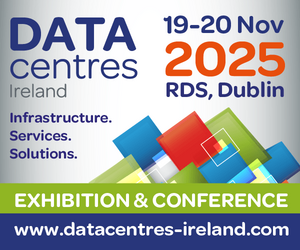Today’s data centres are in a state of chaos according to new research from analyst firm Quocirca. According to a survey of senior IT professionals revealed that 28% could not say how many servers they were running; 30% had no idea how many devices were connected to their networks. Nearly one in five (19%) of those surveyed could identify which room equipment was located – but not its whereabouts in the room.
Consequently, when it came to locating a server that goes down, one in five said it took longer than a day; 22% said it could take them up to a day; and a third said up to half a day.
There were also alarming signs in respondents’ estimation of how well utilised their equipment is – almost half of those polled did not measure it. In such cases, respondents “estimated that their server utilisation was over 75%, whereas industry standard figures give something like 15% – they’re living in dreamland,” said Quocirca analyst Dennis Szubert.
There were also some startling results concerning data centre power and space. When Quocirca asked for forecasts of when their data centre would run out of space and power in the data centre, 8% said they had no idea. “If you know when you’re going to run out of power, that’s a problem, if you don’t know when you’re going to run out – that could be a bigger problem,” said Szubert adding that commissioning a data centre could takes years sometimes.
The survey also revealed that 14% had already hit a power limit. “They cannot get any more power into the data centre, to cool and power any more servers,” commented Szubert. Thirty per cent know they have a limit but they have not yet hit it.
“I’ve heard there are no new data centres being built within the M25 [around London] because of power constraints – and if you want to get more power into the data centres you already have, there’s an 18-month wait just to get the cable run in. This also depends on whether your local substation can bear the load – if you need a new substation – you’re talking of a cost running into millions of pounds. So keeping tabs on what power limit you have is crucial – and 6% of those we questioned have no idea what that limit is,” said Szubert.
Szubert also noted that few firms had got to grips with data centre power usage. More than half of data centre managers deal directly with the energy bill, he said. That meant that the people who could most affect power consumption in the firm didn’t even know what they’re using.
Szubert advised that virtualisation of simple ‘file and print’ and ‘test and development’ services could save a lot of money, “But there’s no incentive because they’re not paying the bill. This also means there’s no pressure from the business users to reduce power because they’re not being charged back for the power they’re using,” he added.
Asked whether they have a formal policy to reduce power, 43% said they did, but of those that have 35% do not pass it on to IT as a formal objective, “This shows a major fault line – there’s a either a major breakdown in communication between finance and IT or these firms are paying lip service to the green agenda,” said Szubert.
Quocirca’s advice is to incentivise the data centre and its management, by making sure that data centres pay the power bill and charge it back to the people who are using the power.
Quocirca’s survey data was taken from 301 interviews with senior IT influencers and decision makers completed in November and December 2007 in the US, the UK and other European countries. The survey was performed in conjunction with data centre management vendor Global DataCenter Management (GDCM).








Subscribers 0
Fans 0
Followers 0
Followers